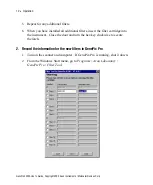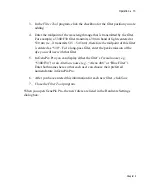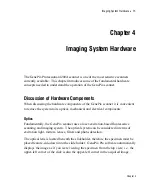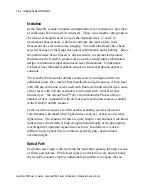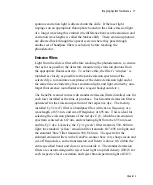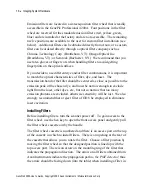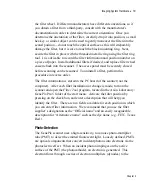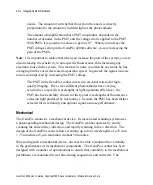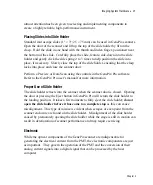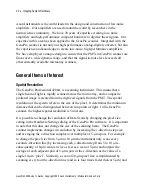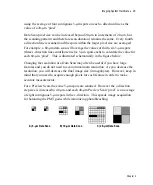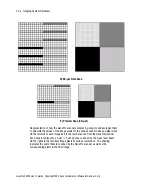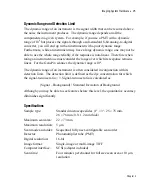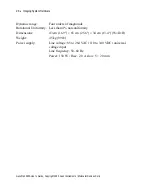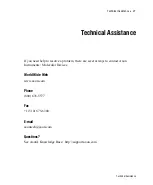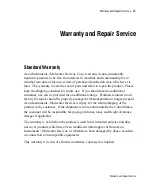
Imaging System Hardware
•
23
using the average of four contiguous 5-
µ
m spots on each
x-
direction line as the
value of a 20-
µ
m ‘pixel’.
Data Scan pixel size can be increased beyond 20 µm in increments of 20 µm, but
the scanning pattern (and therefore scan duration) remains the same. Every fourth
x
-direction line is scanned and the spots within the larger pixel size are averaged.
For example, a 60-µm data scan will average the values of thirty-six 5-µm spots
(three
x
-direction lines contribute twelve 5-µm spots each) to calculate the value for
each 60-µm ‘pixel’. This is illustrated schematically in the figure below.
Changing the resolution of a Data Scan may often be useful if you have large
features and you do not need to scan at maximum resolution. As you decrease the
resolution, you will decrease the final image size (in megabytes). However, keep in
mind that you need to acquire enough pixels for each feature in order to make
accurate measurements.
For a Preview Scan, the same 5-
µ
m spots are scanned. However the
y
-direction
step size is increased to 40 µm, and each 40-µm Preview Scan ‘pixel’ is an average
of eight contiguous 5-µm spots in the
x-
direction. This speeds image acquisition
for balancing the PMT gains while minimizing photobleaching.
A) 5-µm Data Scan
B) 10-µm Data Scan
C) 20-µm Data Scan
Chapter 4




